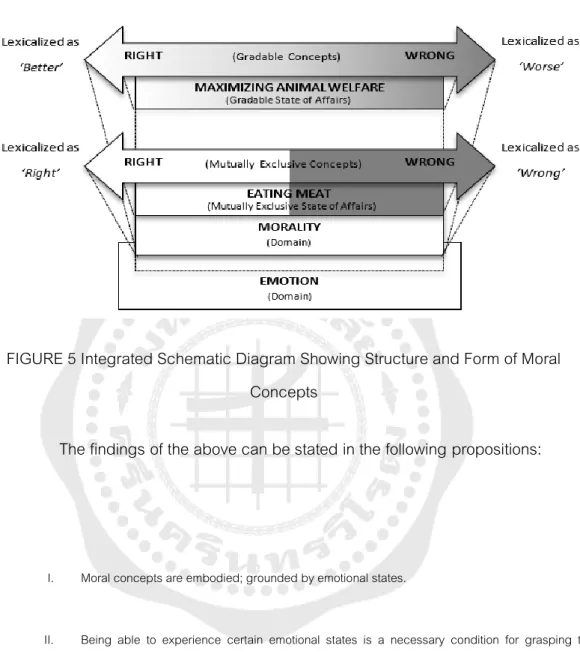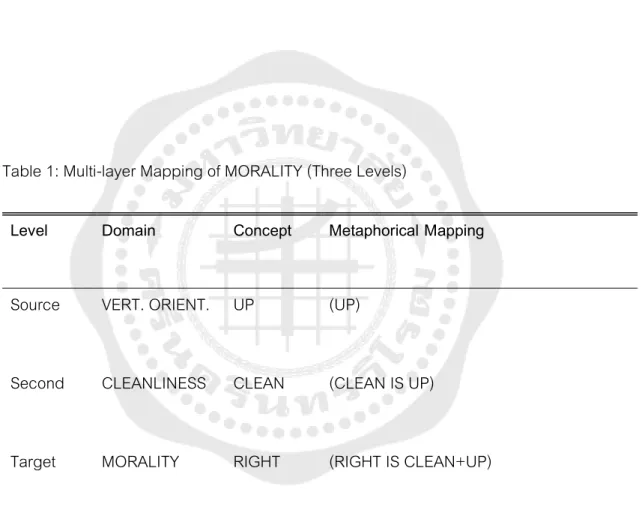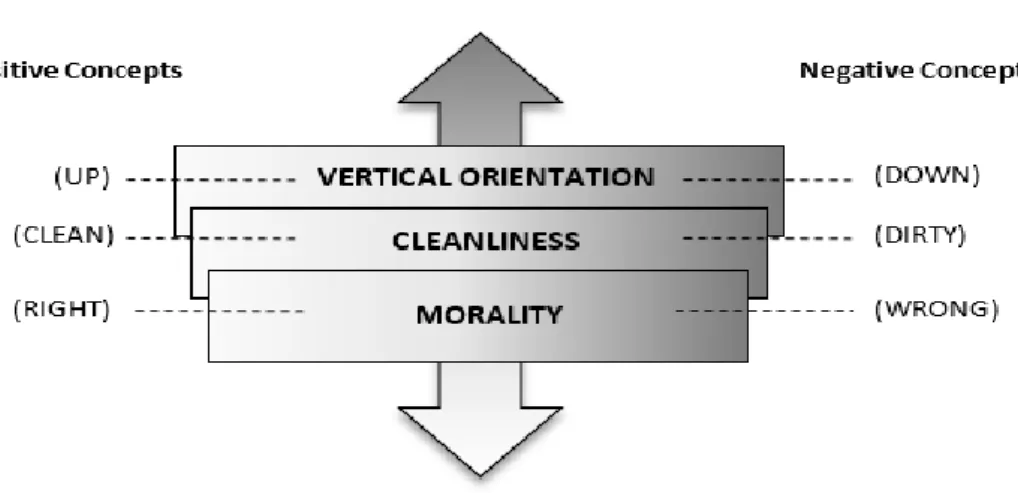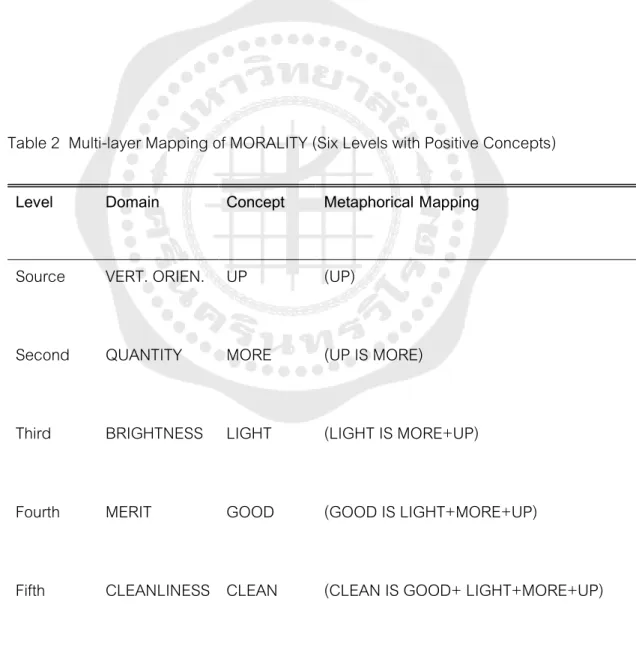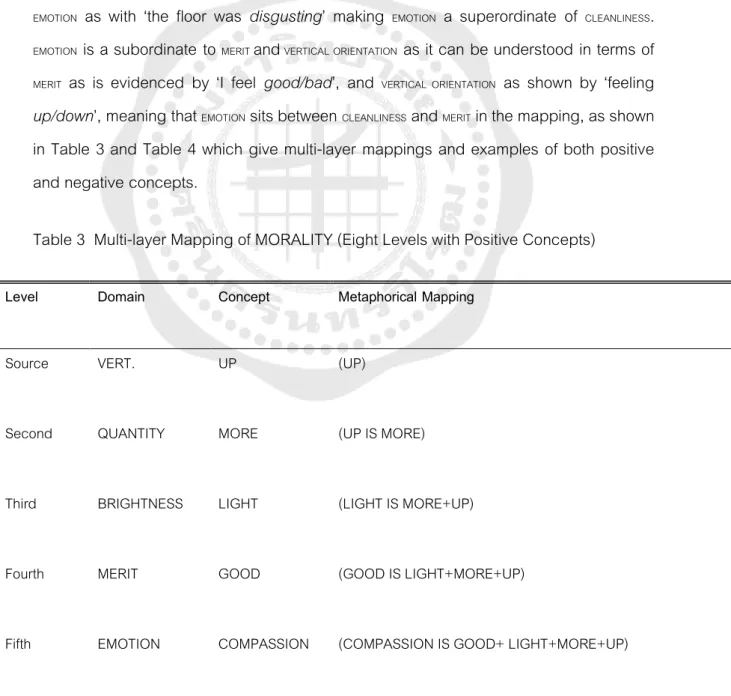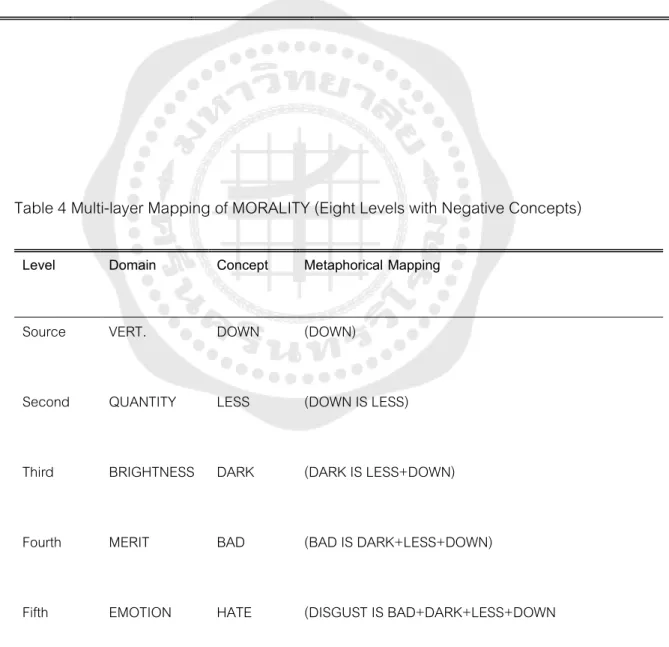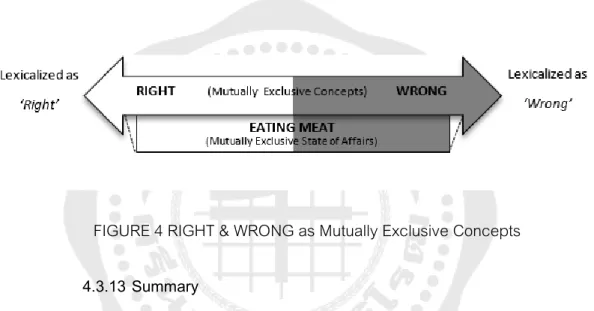วิทยานิพนธ์นี้เป็นส่วนหนึ่งของรายวิชา ปรัชญาดุษฎีบัณฑิต, สาขาวิชาภาษาและการสื่อสารระหว่างประเทศ. การวิเคราะห์ทางภาษาศาสตร์ทางปัญญาของแนวคิดทางศีลธรรม วิทยานิพนธ์ที่ส่งมาเพื่อเติมเต็มข้อกำหนดสำหรับปริญญาปรัชญาดุษฎีบัณฑิตบางส่วน
Background and Overview
In the light of this aim, it will be instructive to begin by appreciating the wonder of language and its relation to thought before proceeding with the proposed analysis.
Language and Thought
In this way, language can be understood as connecting one mind with another, and depending on the content of the information transferred, even change one's thoughts, enrich one's knowledge, change one's intentions or evoke one's emotions. Today, the study of language and how language relates to mind is a truly interdisciplinary endeavor, drawing on both conceptual analysis conducted from the proverbial armchair of the philosopher and empirical evidence amassed in the lab of the neuroscientist. (Castroviejo et al., 2018).
Objectives
Basic assumption: Since language is used to express conceptual material, the form and structure of moral concepts will be reflected, to some extent, in the form and structure of moral language. Such a perspective, I hope to show, provides us with a lens through which we can examine the conceptual nature of the moral concepts of RIGHT and WRONG through the analysis of moral language, as seen from such a perspective, the structure and functioning of moral language. . as reflective of the structure and functioning of moral thinking.
Scope
In the last forty years, research in the field of Cognitive Linguistics and cognitive psychology has been increasingly intertwined, especially regarding the embodiment hypothesis (Rohrer, 2010), with theoretical work by linguists that is used in conjunction with experimental results in cognitive science. .
Overview of the Arguments
The Emotional Structure of Right & Wrong
In offering further support, I point out that moral judgments are often expressed explicitly in emotional dispositional terms. It is ultimately concluded, based on this analysis, along with the converging experimental data, that moral properties and concepts are reducible to emotion-dispositional properties and concepts.
Conceptual Structure & Moral Metaphor
I then present an analogical argument that draws a parallel between moral properties and concepts and what I refer to as emotional disposition properties and concepts that are identified by adjectives such as 'annoying', 'frightening' or 'disgusting' and they seem to be. indisputable and common examples of the erroneous preassignment of subjective emotions to mind-independent states of affairs; a conceptual and linguistic error which I have called the attribution error (Bartlett, 2020). I then show that moral language functions analogously to the language of emotional dispositions, thus providing reason to believe that moral actions are emotional in nature.
The Conceptual Form of Right & Wrong
Taking RIGHT and WRONG - as mutually exclusive or gradable - depends on the state of affairs to which they are applied. I present linguistic evidence in support of a conceptual connection between the form of TRUE and WRONG and the physical form of the state of affairs to which they are applied.
Significance
In utilitarian-style moral judgments based on maximizing or minimizing outcomes, for example, RIGHT and WRONG are usually understood to be gradable in nature. Deontological judgments, in contrast, with their foundations in categorical 'black and white' moral rules, tend to force RIGHT and WRONG into a mutually exclusive form.
Theoretical Framework
- Epistemic Claim: Encyclopaedic Knowledge
- Concepts, Frames and Domains
- A Theory of Mind: Embodied Cognition
- Concepts and Language
Encyclopedic knowledge is modeled in terms of a number of constructs including domain […], cognitive model and idealized cognitive model (Evans, 2007). Classical theories of cognition, such as Representational Theory of Mind (RTM) and Computational Theory of Mind (CTM), view the mind as an abstract symbol manipulation system that computes concepts in an amodal (non-sensory-specific) way and which it does not extend beyond the boundaries of the brain.
Introduction
Now that the main objectives and theoretical assumptions have been established, in the next chapter I will proceed to a review of the relevant literature in preparation for the main analyzes in chapter 4. In preparation for the analyzes in chapter 4, this chapter provides an overview and critical analysis of the relevant literature and the main theoretical claims presented therein.
Constructing Concepts
As mentioned in Chapter 1, the current work assumes an embodied view of the mind – which understands cognition to be grounded in the physiological structures of the whole organism, as opposed to being a disembodied abstract symbol manipulation process that takes place exclusively in independent areas. of the brain – together with what can broadly be called an 'encyclopaedic view of knowledge' on concepts. I will therefore proceed to introduce the contending theories of concepts which have led to the development of the aforementioned views, and this will serve both as a discussion of the conceptual literature and also as an argument in support of the basic assumptions made here.
Concepts as Definitions
It is this philosophical argument, along with experimental evidence, that ultimately led to the downfall of the definitive theory of concepts. One of the important discoveries made by psychologists that shows the definitional theory to be wrong was that of the so-called typicality effects.
Prototype Theory
Another problem for the prototype theory is that it does not seem to be able to explain the composition of concepts. To give a well-known example (Fodor . & Lepore, 1996), a typical PET FISH has a different prototype form than that of typical FISH or typical PETS.
Exemplar Theory
A typical PET is most likely to resemble a dog or cat, and a typical FISH is medium-sized and gray, while a typical FISH PET is likely to be imagined as small and colorful - so, nothing like a PET typical or a typical fish. . Therefore, by looking at a computer, I am able to take this information, compare it to the new car, and categorize it based on its similarity to the stored specimen information.
The Knowledge Theory
It is important to note that it is not only our knowledge of a prototypical SON or DAUGHTER that is used to draw this conclusion, but also the knowledge that, for example, young children are smaller than their parents, parents often hold hands with their children. to keep them safe, if the child was being looked after by a teacher they would probably not be brought to the supermarket etc. Finally, the knowledge approach allows our concepts to be updated by new experiences and develop over time.
Defining Concepts
At a high level, it rises to the construction of a theory which connects the scattered and in their isolation incomprehensible facts and in this way explains them. It is in the spirit of Waismann's words that I bring logical and conceptual analysis to the field of Cognitive Linguistics and hope, in applying these methods to the data collected and theories constructed, to challenge the foundational assumptions of the field investigate and explain.
Conceptual and Logical Analysis
It has often been observed that philosophy and science express two very different attitudes of the human mind. Methodical explanation of the concepts used by a given claim or proposition and a subsequent logical analysis of the consequences of the clarified propositions to assess the formal validity of these propositions in the use of an argument.
Intuition and Introspection
Such a technique, when applied to language, relies on the researcher's intuition as a native speaker in being able to assess whether an utterance is grammatical or ungrammatical. In the context of psychology and conceptualization, the method makes use of the researcher's intuitive understanding of concepts, their representation and their associations to divergent but connected concepts.
Secondary Data
Of course, it is always possible that intuition, although it gives us direct access to conceptual knowledge, is distorted by the influence of cognitive biases, so such data must be used with discipline and rigor – as Talmy (2000) makes clear. This consideration requires the application of conceptual and logical analysis when using such data.
The Lexical Approach
Analysis
The Emotional Construction of Moral Concepts
One of these most dominant in the cognitive science literature is Conceptual Metaphor Theory (CMT). In the next section, I will attempt a CMT-based analysis of moral concepts against the background of earlier emotionalist study to see if the framework can shed light on our analysis.
The Metaphorical Structure of Moral Concepts
- Conceptual Metaphor Theory & Moral Concepts
- The Foundations of CMT
- Under Attack
- The Multiple Source Domain Problem
- The Moral High Ground
- Doing the Dirty
- The Dark Side
- Paying the Price
- Deplorable Acts
- The Problem of Divergent Source Domains
- Building Conceptual Layers
- The Scope of Metaphor
- From the Ground Up
- A One-Way Relationship
- Directionality
- Constituents of Multi-Level Mappings
- Doing Good
- Summary
The problem can be stated with an example: Above, from linguistic metaphors such as "I would never stoop so low", we inferred the existence of the conceptual metaphor MORALITY HAD A VERTICAL ORIENTATION. For the current proposed analysis to work for CMT, all of the putative source domains of MORALE exposed in the above analysis (and others yet to be found) would have to be relevant components of a multi-layered mapping.
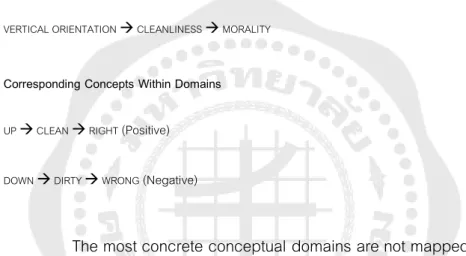
The Form of Moral Concepts
- Lexical Relations
- The Conceptual Nature of Antonymy
- Antonymic Form
- Gradable Antonyms and Gradable Concepts
- Complementary Antonyms and Mutually Exclusive Concepts
- Conceptual Representation and Grammar
- Grammatical Analysis
- Interpretations
- Context and Conceptual Form
- Mutually Exclusive Concepts
- Gradable Concepts
- Grounding Right and Wrong
- Summary
In light of the above, we can conclude that the conceptual nature of RIGHT and WRONG can be mentally represented as mutually exclusive and variable. The conceptual nature of RIGHT and WRONG as abstract concepts is volitional and therefore assumed by the nature of the states to which they are applied.

Conclusions and Implications
The Emotional Constitution of Moral Concepts
I showed that moral language operates in an analogous way to emotion-dispositional language, giving rise to the belief that moral concepts are emotional in nature. In offering further support, I drew attention to the fact that moral judgments are often expressed explicitly in emotional disposition and also often commit the attribution error.
Conceptual Metaphor
In light of the linguistic data and the converging neurological evidence, it is therefore concluded that the moral concepts RIGHT and WRONG can be understood as being a special class of emotion-dispositional concepts and as such are emotionally constructed. This, I argue, begs the question of how this is possible; why it is necessary and whether it is possible that these divergent domains have some conceptual relation to each other.
Conceptual Form
It is vital that this question be resolved, as it seems to undermine the core claims of CMT: that abstract domains are necessarily structured by source domains, and that conceptual structure on these source domains is therefore necessary for a concept; that the target concept is always understood in terms of the source concept. I tried to offer a possible way around this problem by postulating and outlining a possible enrichment of CMT, which assumed that: if different source domains can be mapped onto the same target domain, then all these source domains must be conceptually related to each other. .
Further Insights & Implications
- Kinds of Concept
- Building A Theory of Conceptual Kinds
- Entity Concepts and Predicate Concepts
- Compositionality and Emergence
- Empirical Evidence for Divergent Conceptual Kinds
- The Flexibility of Words and Concepts
- Other Conceptual Kinds
- Summary
The concept PET in the compound PET FISH must therefore be a predicate concept—meaning something like "HOME"—that modifies the entity concept. Phrases such as "pet fish" are often referred to in conceptual literature as noun-noun constructions, but this is incorrect.
In Conclusion
- Final Thoughts
A question for philosophers: What are the logical limitations of the study of the human conceptual system which are imposed by the limitations of the conceptual system itself. A question for linguists: If conceptual data are inherently richer and more complex than linguistic data, how far can linguistic analysis take us in the study of the human conceptual system.
